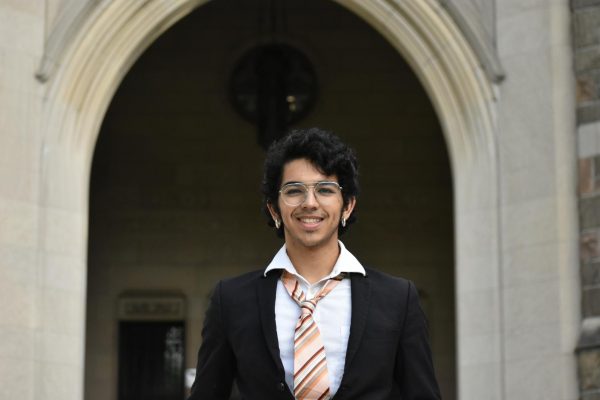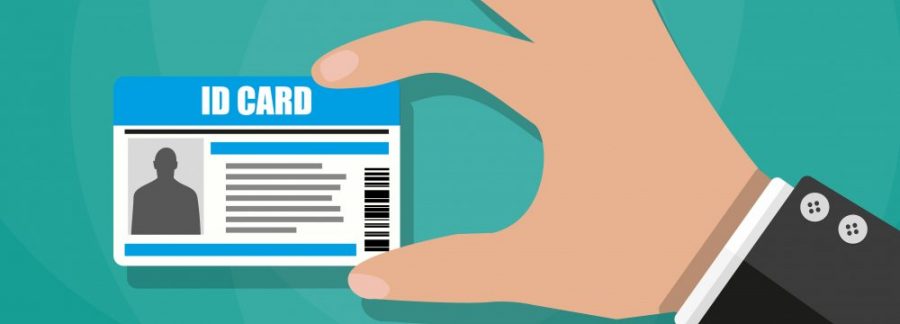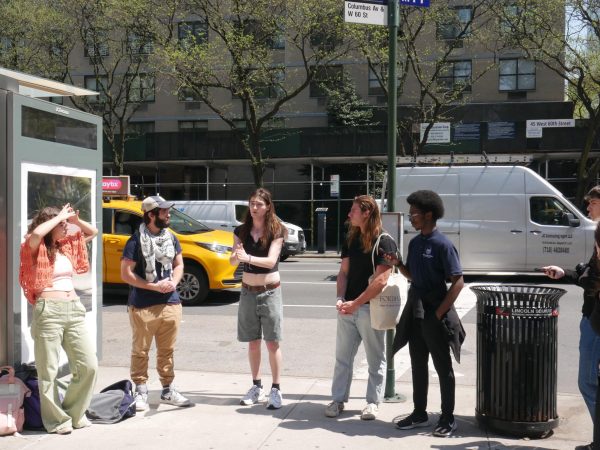Fordham ID Services Faces Physical ID Shortage
After a large influx of students coming to campus for the fall semester, Fordham ID Services is currently facing a shortage of physical identification cards to provide for students according to Sanjida Rufaida, FCRH ’25, a student worker in ID Services.
Now, students who want to register an identification card with the university must do so through an electronic ID (eID) or wait indefinitely as the department awaits a shipment of blank plastic cards, according to Rufaida.
Shortages of physical IDs began just two weeks after the department began offering them, said Rufaida. As people continue to line up and request a physical card, the department must defer them to a later date.
The department is unsure about when to anticipate the arrival of the materials, said Rufaida. “I’ve been telling people ‘two weeks’ for about four weeks now,” she said. Rufaida still isn’t sure when students who want to get their hands on a physical ID card will be able to do so.
The delay is causing frustration among students. “I tried scheduling an appointment to get a physical ID at the beginning of the semester, and they randomly canceled my appointment,” said Jacey Caplan, FCRH ‘24. “When I tried to schedule a new one, they had no appointments open to schedule.”
Assistant Vice President for Communications Bob Howe said the university is not able to control how quickly it can get a new shipment of ID cards. “There is a chip shortage in the global markets which has created a long lead time in getting blank ID cards,” said Howe. “We are requesting users with eID not to switch to plastic cards unless it is absolutely necessary.”
For most students, the only alternative to a physical identification card is an eID. However, many students have reported malfunctions or glitches occurring between the eIDs and the university’s scanners within the past month. “I’ve noticed a lot of problems with the electronic IDs not working and so kids are always getting locked out of dorm buildings,” said Clare Balsan, FCRH ’24, who works as a desk assistant in a residence hall on campus.
According to Balsan, students have also “been having problems at dining locations with their IDs not working,” making it difficult to get food on campus.
The issues between the eID and scanners began to be reported to Fordham IT Customer Care at a high rate after Labor Day, said Howe.
Rumors surrounding the cause of the seeming incapabilities between eID and scanners began to circulate as more and more students began to report complaints with Fordham IT. Some students have suggested that those with iPhones won’t be able to have a well-functioning eID.
“This is an inaccurate statement,” said Howe. “The card reader uses Bluetooth for door access and Apple Pay uses NFC. The card readers use the same backend to check both physical and electronic ID.”
When reports about eID malfunctions began to rise, Fordham IT sent out a mass email to remind students how to operate their electronic identification cards. This is the approach the department took after the post-Labor Day rise in reports. “Once the communication was sent out, we saw almost a 60 percent dip in the number of calls coming to ITCC the next day and about 90 percent dip in calls about two days later,” said Howe.
Howe, citing Fordham IT, said that most malfunctions from the eIDs occur for one of three reasons: “(1) The VitalCheck self-reporting process was not completed at least 30 minutes before a person used the eID to swipe into a building or room. (2) the “eID – Card Access” tile in Fordham’s mobile app was not being used. The tile below, that opens the photo id, was used instead. (3) or the VitalCheck QR code was being used.
However, if Fordham IT confirms that the malfunctions are coming from the scanners and not the eIDs, then service on that scanner begins as soon as possible, said Howe. He said many of the problems in these circumstances stem from internal system errors instead of hardware shortcomings.
On Sept. 27, Fordham IT updated the interface of the Fordham Mobile App make usage of the eID more intuitive for the user, per an email sent out by Fordham IT.
The update adds a large button titled “eID-Campus Access” that students can tap. Tapping this button opens up the eID’s scanning ability and will allow quicker access to open doors. The update also adds a smaller button titled “eID-Photo Card” that will display a digital photo of the identification card.
Fordham began issuing electronic IDs at the beginning of the Fall 2020 semester “in response to the COVID requirements issued by the state, city, and CDC to provide students who were going to be on campus with a way to get a university ID without going to a location and standing in line,” explained Howe.
Currently, there are almost 4,800 students registered with an electronic ID, said Howe.

Sebastian Diaz is a senior from Chapel Hill, N. C. who is double majoring in journalism and film. After starting as a news reporter for The Fordham Ram...











































































































































































































